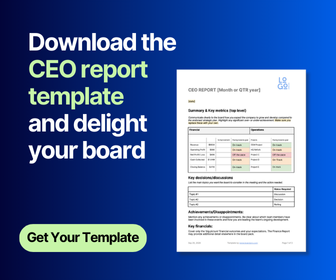Management and governance are not one and the same, and unfortunately, many people still get the two confused. After years of misunderstandings and misconceptions, many myths about governance have surfaced. In this article, we hope to demystify some of these misconceptions and straighten out what good governance really is.
A rundown of what governance is not
In 1916, French mining director and management theory pioneer Henri Fayol defined the five management functions in his book, “Administration Industrielle et Generale.”
They are as follows:
- To forecast and plan
- To organise
- To command and direct
- To coordinate
- To supervise and get feedback
Management is the coordination and administration of tasks to achieve a defined goal. Management operates through specific structures that are set in place and committees like project control boards and project management offices.
Getting things straight
Good management and good governance are not synonymous. On top of that, governance functions and management functions are not synonymous. However, as we will be talking about, good governance will result in good management outcomes.
The five functions of governance
The Governance Institute defines governance as:
“The system by which an organisation is controlled and operates and the mechanisms by which it, and its people, are held to account. Ethics, risk management, compliance and administration are all elements of governance.”
Governance is the exclusive responsibility of the governing body (in our case, the Board of Directors) for the performance and conformance of the organisation. So without further ado, below are the five functions of governance.
1. Defining the organisation’s objective
This needs to be clearly defined through the company’s mission and vision from the very start of the organisation’s development. Once this is set, the organisation’s strategic plan must reflect said objectives. The objectives define the organisation's purpose and how it will achieve it. It is the essence and the fundamental driving force of the organisation, making it the foundation and one of the most important things to define for the business's future success.
2. Defining the ethics of the organisation
Determining how the organisation will go about handling business clients, perceived ethics and employee behaviour is crucial to the organisation's success. Company ethics outline acceptable behaviours outside of government and legal control. It consolidates what is considered right or wrong within the confounds of the organisation. Values such as corporate responsibility, environmental impact, stakeholder engagement and legal responsibilities are all topics that need to be brought up and unanimously agreed upon. Ethics are based on moral values, and ethical standards start at the top of the company. The board of directors sets an example to all other organisation members.
3. Planting the seed that grows into the company culture
Company culture is a more subtle process that consolidates and solidifies over time. It can either be deliberately set and cultivated over time, or it doesn't exist at first but grows the longer the company exists. It refers to how people within the company interact with each other, the values they hold and the decisions they make. It is a much more subtle process as it includes many elements, including the mission, vision of the organisation, the general work environment, leadership and management styles, ethics, expectations and future goals.
Amongst all of the points listed above, “governmentality refers to the staff’s willingness to be governed and to support the governance system. Governmentality can sit at the root of the organisation’s culture, as it defines how supportive the organisation is, how innovative the organisation is, how transparent the organisation is with their employees and how professional the management is.
4. Ensuring compliance by the organisation
This signifies the company’s efforts to detect, react and cease any sort of unlawful behaviour that is done by any individuals working within the organisation. This includes employees, administrators, management, executives, directors, freelancers or other externally paid individuals working for the company. It determines the organisation’s regulators, statutory and legal obligations and ensures that all individuals achieve the organisation’s objectives while remaining ethical.
5. Defining and applying the governance framework
According to Talbot and Jakeman, governance framework is the
“guidance system composed of standard management practices within the governance framework designed to suit the organisation.”
At the foundation of it all, the board of directors have the job of remaining objective and accountable. In most cases, they are held accountable for the organisation's performance. However, there can be cases where the governing body is unable to undertake all of the governance work. Therefore, they need to delegate tasks to the management team of the organisation. These members of management need to align themselves with the governance framework to ensure the company’s values are upheld.
Conclusion
With all the points explained above, ultimately, governance and management are definitely two different things that can not be seen as one.
On the one hand, management’s objective is to achieve goals within an organisation whilst understanding the company’s missions and vision, and all the whilst working within the company’s ethical framework. But on the other hand, governance is the part that defines those rules and frameworks under management functions. That is why it is said that with good governance comes good management.
Both branches are definitely symbiotic and interdependent, with one leading the other. However, they fulfil entirely different functions. In a well-governed, well-planned organisation, the two systems can work together smoothly to benefit all stakeholders and individuals linked to the company.
Share this
You May Also Like
These Related Stories

The Ethical Harmony Map: linking corporate governance with ethics

The 4 guiding principles of corporate governance


